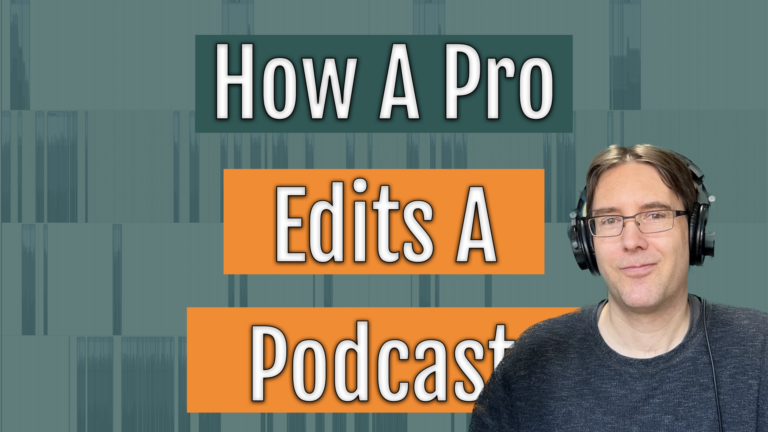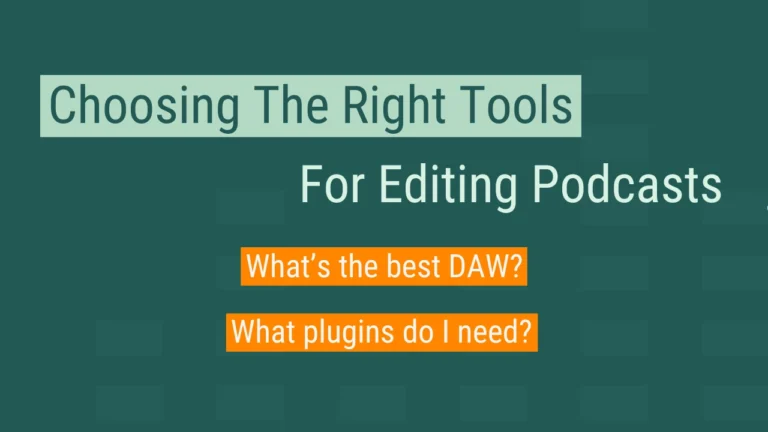
If you’re a podcaster, you’ve probably heard the terms “mixing” and “mastering” thrown around. But what do they mean, and why are they important? In this article, we’ll take a deep dive into the world of mixing and mastering for podcasts, covering everything from the basics of each process to tips for getting the best results.
Mixing: Getting Your Podcast Audio Balanced
Mixing is the process of taking your individual audio tracks and combining them into a final stereo mix.
The goal of mixing is to create a cohesive and balanced sound that sounds good to your listeners. You want to ensure that the dialogue is clear, easy to understand, consistent in volume, and that the music and sound effects don’t overpower the dialogue.
Mixing Phase:
- Organize and prepare individual tracks for mixing.
- Balance levels of each track to ensure a cohesive and balanced mix.
- Apply EQ to individual tracks to enhance clarity and balance.
- Use compression to control dynamics and ensure each track sits nicely in the mix.
- Use de-ess to reduce or remove harsh sibilance sounds.
- Apply other processing as needed
- Mix tracks together to create a final polished and cohesive sound.
- Apply final EQ and compression to the master track or mix bus to ensure overall tonal balance and control dynamics.
- Export the final mix for mastering.
Here are some tips for getting the best results during the mixing phase:
- Organize your tracks: Before you start mixing, make sure that all of your audio files are organized and named appropriately. This will make it easier to find and adjust each track as needed.
- Set your levels: Start by setting the levels for each individual track. You want to ensure that the dialogue is clear and easy to understand, and that the music and sound effects don’t overpower the dialogue. Ideally, aim to have each track somewhere between -23 and -21 LUFS.
- Use EQ: EQ is a powerful tool for shaping the tonal balance of your podcast. Use it to remove unwanted frequencies, cut specific frequency ranges to enhance clarity, or apply other tonal adjustments.
- Use compression: Compression helps to control the dynamic range of your audio, ensuring that each track sits comfortably in the mix. Apply compression to individual tracks as needed, and consider adding a compressor to your master bus to glue everything together.
Mastering: Getting Your Podcast Audio Ready for Distribution
Once your mix is in place, it’s time to move on to mastering. This is the final step in the audio production process and involves preparing the final mix for distribution on various platforms and devices.
The goal of mastering is to ensure that the final mix sounds polished, consistent, and optimized for the target playback environment. This involves applying loudness normalization and formatting the audio for distribution.
Mastering Phase:
- Import the final mix into the mastering software.
- Normalize the overall loudness to industry standards.
- Make final adjustments to compression to optimize the overall tonal balance and dynamics of the mix, if needed.
- Add any necessary metadata to the audio file, such as episode title, author, and artwork.
- Encode the audio file to the appropriate format for distribution on various podcast platforms.
- Prepare the final audio file for delivery to the client.
Do you want to learn more about podcast editing?
Podcast Editing School
Here are some tips for getting the best results during the mastering phase:
- Normalize loudness: One of the most important aspects of mastering is loudness normalization. This ensures that your podcast is optimized for playback on various platforms and devices, and avoids listener fatigue or distortion caused by overly loud or quiet audio. The recommended loudness range for podcasts is -16 LUFS, with a True Peak (TP) value of -1 dBTP or lower for stereo episodes and -19 LUFS/ -1 TP for mono.
- Format for distribution: Finally, you’ll want to format your audio for distribution on various platforms and devices. This may involve encoding the audio to the appropriate format, adding metadata such as episode title and author, and preparing the final audio file for delivery to the client.
What is a LUFS?
LUFS stands for Loudness Units Full Scale. It is a unit of measurement used to measure the loudness of audio, and is typically used in the context of loudness normalization, where audio is adjusted to a target loudness level for consistent playback across different platforms and devices.
LUFS is a relative measure of loudness, meaning that it takes into account the characteristics of human hearing and the perceived loudness of audio, rather than simply measuring the amplitude or volume of the audio signal.
In conclusion, mixing and mastering are important steps in the podcast production process. By following the tips and best practices outlined in this article, you can ensure that your podcast sounds polished, professional, and optimized for playback on all devices and platforms. Remember to invest in high-quality equipment, choose a good recording environment, and edit your audio carefully to ensure that your podcast audio is of high quality. By getting your mix and master right, you can improve the listening experience for your audience and make your podcast stand out from the rest. So take the time to get it right, and your listeners will thank you for it.






